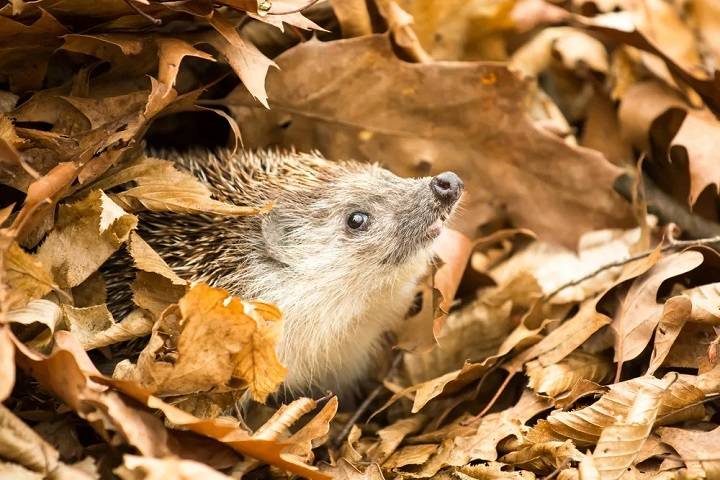Hedgehogs, with their endearing appearance and gentle demeanor, are cherished visitors to gardens across the UK. However, during the colder months, these nocturnal creatures retreat into hibernation to conserve energy and survive the harsh winter conditions. In this guide, we’ll explore the fascinating phenomenon of hedgehog hibernation and discuss when these delightful creatures emerge from their winter slumber to greet the springtime warmth.
Understanding Hedgehog Hibernation
Hedgehog hibernation is a survival strategy employed by these small mammals to cope with food scarcity and low temperatures during the winter months. During hibernation, hedgehogs enter a state of torpor, characterized by significantly reduced metabolic activity and body temperature. They seek out sheltered locations such as leaf piles, log piles, or purpose-built hedgehog houses, where they curl up into a tight ball and enter a deep sleep-like state.
Hibernation Period:
Hedgehogs typically begin their hibernation period in late autumn or early winter, usually around November or December in the UK. The exact timing can vary depending on factors such as temperature, food availability, and the individual hedgehog’s health and condition. Once in hibernation, hedgehogs may remain dormant for several months, with some individuals emerging as late as April or May.
Factors Influencing Hibernation Duration
Several factors can influence the duration of hedgehog hibernation:
- Temperature: Hedgehogs rely on external temperature cues to regulate their hibernation patterns. Warmer temperatures may prompt hedgehogs to emerge from hibernation earlier than usual.
- Food Availability: A scarcity of food during the winter months may prompt hedgehogs to extend their hibernation period until food sources become more abundant in the spring.
- Health and Body Condition: Healthy hedgehogs with sufficient fat reserves are more likely to survive hibernation and emerge earlier than those in poor health or condition.
Signs of Hedgehog Awakening
As spring approaches and temperatures begin to rise, hedgehogs gradually emerge from their winter slumber. Signs that hedgehogs are awakening from hibernation include:
- Increased activity: Hedgehogs may become more active during the night as they search for food and water to replenish their energy reserves.
- Vocalizations: Hedgehogs may emit soft grunts or snuffles as they move about their environment, especially during mating season.
- Nest disturbance: If you have a hedgehog house or nesting area in your garden, you may notice signs of disturbance as hedgehogs emerge from their winter shelter.
Providing Support for Hedgehogs
To support hedgehogs as they emerge from hibernation, consider the following actions:
- Provide Food and Water: Leave out dishes of fresh water and hedgehog-friendly food, such as wet cat food or specialized hedgehog food, to help hedgehogs replenish their energy reserves after hibernation.
- Create Habitat: Create a hedgehog-friendly garden by providing shelter, such as leaf piles, log piles, or hedgehog houses, and avoiding the use of pesticides and chemicals that can harm hedgehogs and their food sources.
- Monitor Health: Keep an eye out for hedgehogs in your garden and be alert for any signs of illness or injury. If you encounter a hedgehog in distress, contact a local wildlife rescue center for assistance.
When Do Hedgehogs Come Out of Hibernation
Related Post:
North American Crested Birds: Know the Unknown Facts
Colorful North American Birds: Name with Features
North American Tyrant Flycatcher Bird: Surprising Facts
Hedgehog hibernation is a remarkable adaptation that allows these endearing creatures to survive the harsh conditions of winter in the UK. By understanding the timing and factors influencing hedgehog hibernation, we can better appreciate the resilience and resourcefulness of these beloved garden visitors. As hedgehogs emerge from their winter slumber and embark on their springtime adventures, let us welcome them with open hearts and provide the support they need to thrive in our gardens and green spaces.



